Over a hundred years before the fictional country of Wakanda appeared on the scene in Marvel comics, Marion county was home to the small, but flourishing town of Waconda. The town was the first stage relay north of Salem along the Sacramento-Portland line run by the Oregon Stage Company. January 18, 1864, the Oregonian published a small paragraph titled “Where is Waconda?” addressing a reader’s question. The article describes a “pleasantly situated village, twelve miles north of Salem. Its present business is transacted by the following, as we learn, to wit one family physician, one storekeeper, one surveyor, one lawyer, one blacksmith shop, one wagon maker, one plow maker, one brickmaker, one meat market and three carpenters, the Baptist denomination is building a handsome church. The village presents quite an active and business like appearance. The post office at Belpassi supplies the mail facilities.”
Much like the question posed by the Oregonian reader of old, we recently had a research patron inquire the same of us. They believed their family property to be situated along the old stage route on Brewery Hill just north of the Waconda station. Here’s a bit of the history that unfolded as we dug into old maps and historic newspapers.
First, a bit of context. There are two Marion county locations that have shared the name Waconda. The present-day Waconda that readers may be more familiar with is situated to the northwest of Brooks and dates from when the Oregon Electric Railroad was built in 1907, with a post office established in 1912. The first, historic town of Waconda was situated several miles northeast of its present-day namesake, where Keene and Duck Inn Rd intersects with 99E. For frame of reference, the Checkerboard Tavern would be the closest landmark, just north of the intersection.
It was presumed by early historians that the term Waconda referred to the Native American word Wahconda or benevolent spirit, creator, or God. In fact, R.J. Hendricks in a Statesman Journal article dated March 31, 1935 credited the term to Washington Irving’s book Astoria and its tale of the Astor overlanders that traveled with the Wilson Price Hunt expedition. Since Joseph Gervais, one of the early settlers with a land claim neighboring Waconda came to Oregon in 1812 with this expedition, the credit deserves consideration.
As early as 1828, retired Hudson Bay employees began to take up land in the Waconda / Gervais area. French-Indian families such as Gervais, Montour, Bonenfant, Depot, Rondeau to name a few. By the 1840s the Frenchmen of the prairies decided that they wanted the services of a French-speaking doctor, so they organized a delegation to the east to induce such a man to come to Waconda. This brought Dr. Jean Pierre Poujade and his family to the area in 1847.
In 1812, Dr. Poujade served as a surgeon in the army of Napoleon at the age of 22. Family history claims that after surviving the defeat of the invasion of Russia, he sought to leave army service and so immigrated to America, settling first in Louisiana where he married Mary Noble. The couple then moved to Perry, Ohio where they had four children. After Mary’s death in 1837 the doctor remarried and the family moved to Illinois. It was during that time that the doctor attended a talk given by Oregon missionary Jason Lee hoping to attract settlers to the Oregon Territory. He also came to the attention of the French Prairie delegation seeking a doctor, both events that contributed to the family’s decision. In 1847 at the age of 57 they joined a wagon train and made their way to Oregon.
The Poujade land claim on the French Prairie sat adjacent to the town proper of Waconda. By 1852 a hotel, horse barn, and school had been built along with some log cabins. The town was not officially platted until 1866. It was an ambitious 23-square block plan that the surveyors laid out with plenty of room for growth and development. Here stood the hotel, blacksmith shops, a saloon, general stores, butcher shop, drug store and homes of several physicians. Just north of town stood Brewery Hill, home to a large brewery operated by Kerns and Glaizer. Dug into the hillside beneath the one-story brewery was the aging cellar where beer kegs were kept until ready for distribution. The brewery burned twice and was not rebuilt after the second fire.
By 1870 the population was 71 according to census statistics and a shadow loomed on the horizon in the form of Ben Holiday’s Oregon and California Railroad. Two key events would seal the town’s fate. The first, was the decision to locate a rail depot at Gervais, a mile north of Waconda. The second, the discontinuation of the stage coach route. Within a year every Waconda business, with the exception of the brewery and large stage barn, had closed or relocated to Gervais. With little lumber to erect new buildings, it was better to move all good buildings by the use of stump pullers and teams. And with that the town faded into memory.
This article was written by Kaylyn Mabey for the Statesman Journal where it was printed 17 February 2019. It is reproduced here with sources for reference purposes.
Sources:
- “Where is Waconda?”, Morning Oregonian, 18 Jan 1864, p. 2
- “Waconda”, Oregon Statesman, 15 Jul 1870, p. 3
- “What’s Doing in the Vicinity of Waconda and of Gervais”, Oregon Statesman, 26 Aug 1909, p. 2
- “Want to Wipe Waconda Off County Records”, Capital Journal, 13 Feb 1943, p. 8
- “Items of Interest on Pacific Highway From Salem to Aurora”, Ben Maxwell, Capital Journal, 10 Apr 1947, p. 15
- Plat Map of Waconda, 1878 Illustrated Historical Atlas Map: Marion and Linn Counties, Map 1
- Marion County History, Marion County Historical Society, Vol. 6, p. 42-46
- Marion County History, Marion County Historical Society, Vol. 8, p. 15-20
- Marion County History, Marion County Historical Society, Vol. 11, p. 37-43
- Stage Coaches and Stations: Western Oregon 1850-1920, Joseph R. Macdonald, p. 114, 129-130



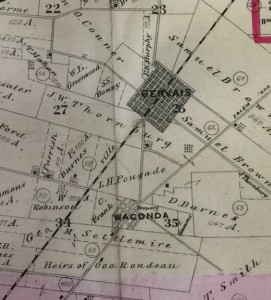
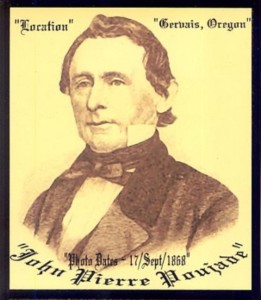
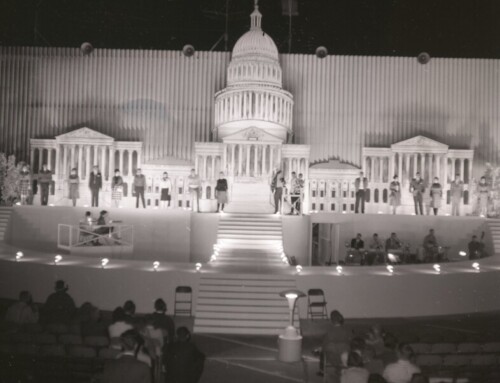
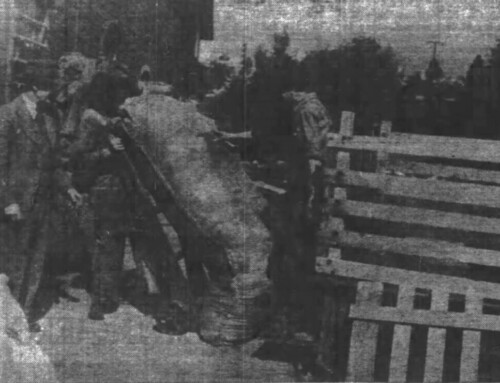
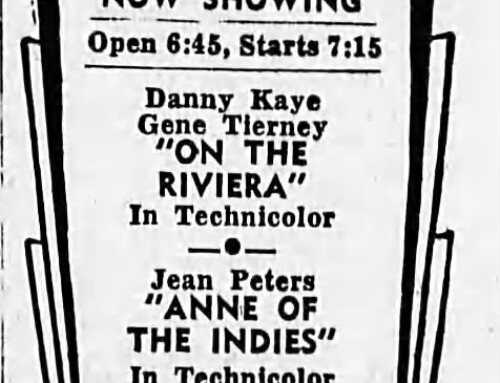
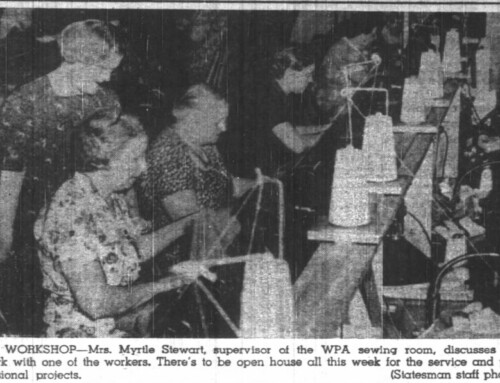
Loved the story about Historical Waconda. About what year is the map. I’m guessing 1852-1865?
1878. The image is from the 1878 Historical Atlas of Marion and Linn Counties which can be accessed at the Historic Mapworks website.
Loved the article. I found it so interesting , first the name, then the town & then the move & lastly, its disappearance. I stumbled across it while looking for anything on my relatives in this area.